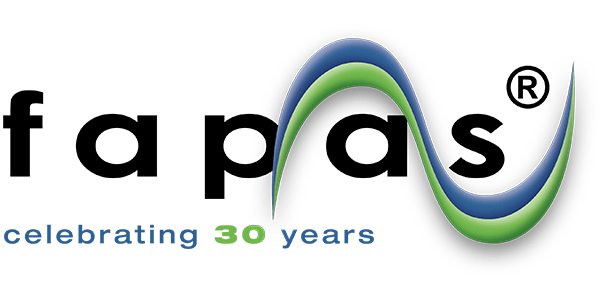The challenges for aquatic risk assessments over the next decade
As we enter a new decade, it’s a time for reflection and for planning ahead. The world of environmental risk assessments is undergoing a period of unprecedented flux, as new, more stringent regulations reshape the landscape for aquatic ecotoxicity testing. Against this backdrop, we are launching a new series of technical observations to explore the issues and the implications for regulators, industry and ecosystems. In this first instalment, we set out the challenges and assess the issues that are likely to occupy the minds of everyone involved in environmental risk assessments over the next decade.
The regulatory landscape for any class of chemical (i.e. plant protection products, biocides and veterinary medicines) which have the potential for environmental exposure during use is going through a period of unprecedented change. The criteria for environmental risk assessments are being refined and tightened, and further changes are expected.
New regulations have recently been introduced in Europe in relation to endocrine disruptors and their effects on aquatic vertebrates, and there is a growing recognition of the need to protect whole ecosystem biodiversity.

Changes in endocrine disruptor regulations
In June 2018, the European Food Safety Authority (EFSA) and the European Chemical Agency (ECHA) published joint guidance for applicants and regulatory authorities on the assessment of the endocrine disrupting potential of active substances. For agrochemical and biocidal active substances under evaluation in the EU, it meant that an assessment of endocrine disrupting properties according to the new guidance was now necessary.
These changes were high on the agenda at the 19th International Akademie Fresenius ECOTOX Conference in December 2019, with the challenges for aquatic higher tier risk assessments being addressed by a number of speakers. They outlined the pressure placed on both regulators and industry to generate sufficient high-quality data to make possible a weight-of-evidence assessment of the potential for a chemical to be an endocrine disruptor. Getting this data right is so important.
The various regulatory frameworks provide testing schemes and use a hazards-based approach, using a tiered testing method. No single test is sufficient to determine the full extent of an endocrine disrupting chemical’s effects on fish species. However, the test guidelines suggest a stepwise approach, starting with gathering information, assessing the evidence, initial analysis of the evidence, a mode of action analysis, and finally reaching a conclusion on the endocrine disruption criteria.
At Fera, we have the technical expertise and facilities to offer all of the currently adopted fish test guidelines, as well as the Fish Life Cycle Toxicity Test (FLCTT) and Zebrafish Extended One-Generation Reproduction Test (ZEOGT), plus adaptations of standard test guidelines to include endocrine-specific endpoints. Our advanced new flow-through aquatics laboratory, opening this year, will enhance our endocrine disruption testing capabilities for fish species.
Our aquatic ecotoxicology specialists are also leading the debate on endocrine disruption testing, helping to ensure that high-quality data can be generated to support effective regulatory decision-making. We will be discussing in detail the issues relating to endocrine disruptor testing and the new regulations in a forthcoming technical observation article.

Assessing impacts on whole ecosystems
At the Fresenius conference, representatives from different sides of the scientific community spoke about the growing importance of mesocosm testing in the light of today’s more stringent regulatory requirements. Mesocosm studies represent the highest tier of hazard characterisation in aquatic assessments.
However, as a number of speakers pointed out, the challenge is getting the right data from these studies to meet the demands of the latest regulations. They highlighted some of the common challenges associated with mesocosm testing, which include ensuring the statistical power of the results and ensuring appropriate species are represented.
At Fera, we have built the most extensive mesocosm testing facility in Europe, with unique features that enable it to deliver outcomes that counter concerns about the reliability of data from mesocosm studies. These features include constantly flowing freshwater to replicate the environment in natural streams, and an extensive network of streams and ditches populated by natural communities of aquatic organisms, over which we have complete control. The mesocosm facility was a joint development between CHAP, Innovate UK and Fera Science.
Our mesocosm therefore provides habitats of appropriate size and quality to enable populations of representative species to become established in sufficient numbers. This ensures that our experiments meet the requirement to report and classify outcomes based on Minimum Detectable Differences (MDD). It is the only flow-through mesocosm in Europe designed with EFSA 2013 guideline recommendations in mind from the outset. It was completed in 2019, which means that 2020 will be the first full growing period for the site, during which full-scale higher tier risk assessments can be conducted.
Want to know about our how we can help with your aquatic risk assessments? Click below;
How we can helpIn our next technical observation in this series, we will look in more detail at the requirements of mesocosm studies, and explain how the facility at Fera provides solutions to the common challenges associated with these future-focused testing facilities.

Join our symposium on advances in environmental risk assessments
The issues raised in this technical observation will form the backbone of the agenda at our own symposium – Recent Advances in Environmental Risk Assessments 2020 – to be held at Fera, near York, on 1st and 2nd July 2020. They are the key issues that will influence the future of environmental risk assessments and the generation of high-quality data in the years ahead, shaping the way we continue to safeguard the natural environment, human health and sustainable food production.




